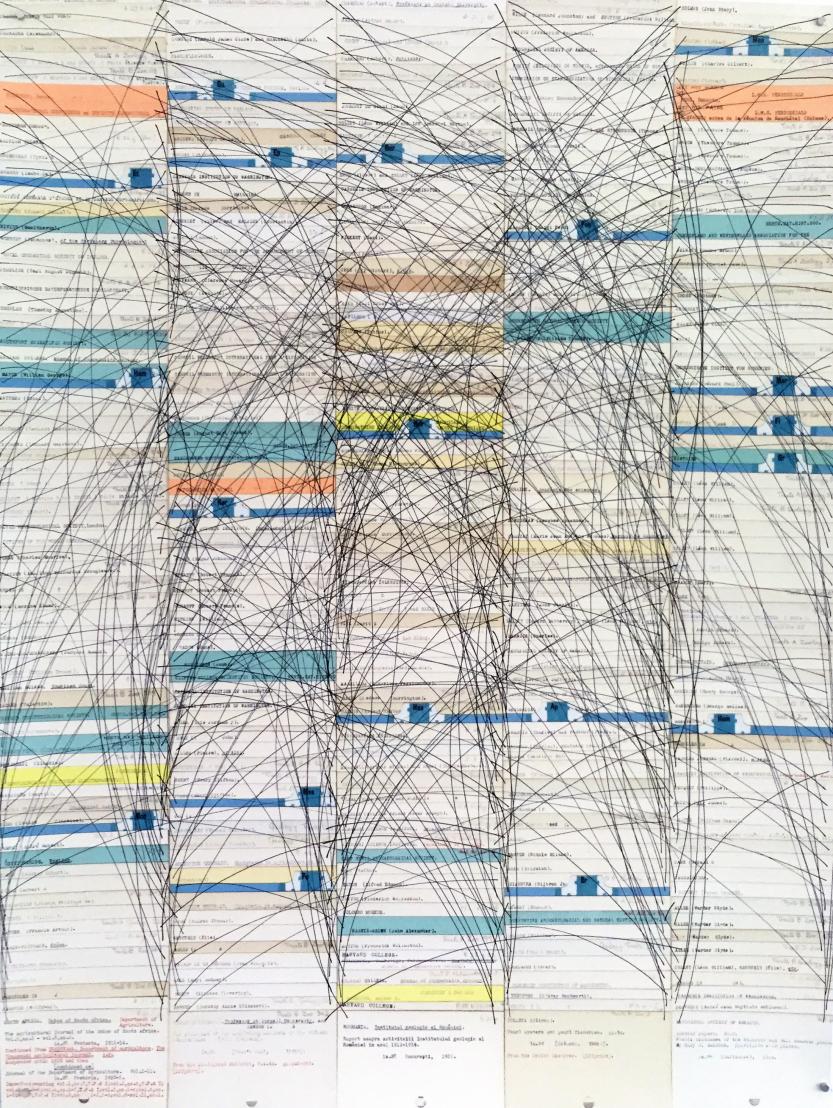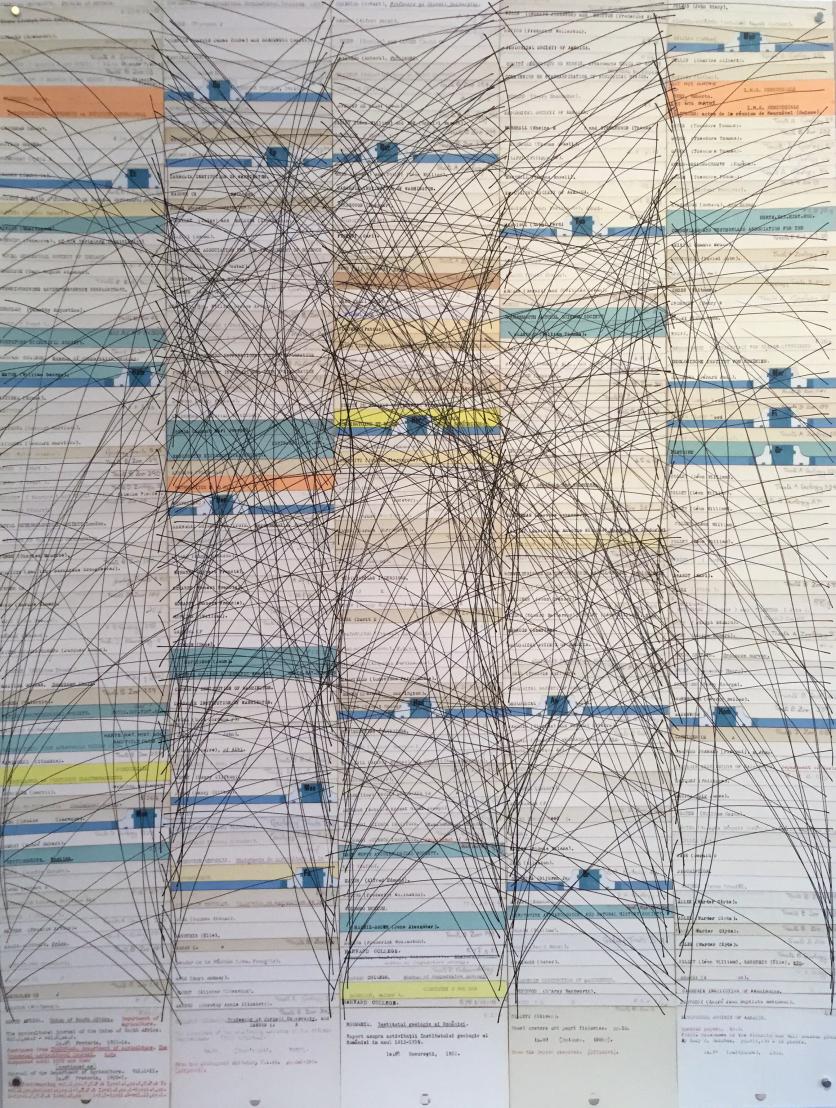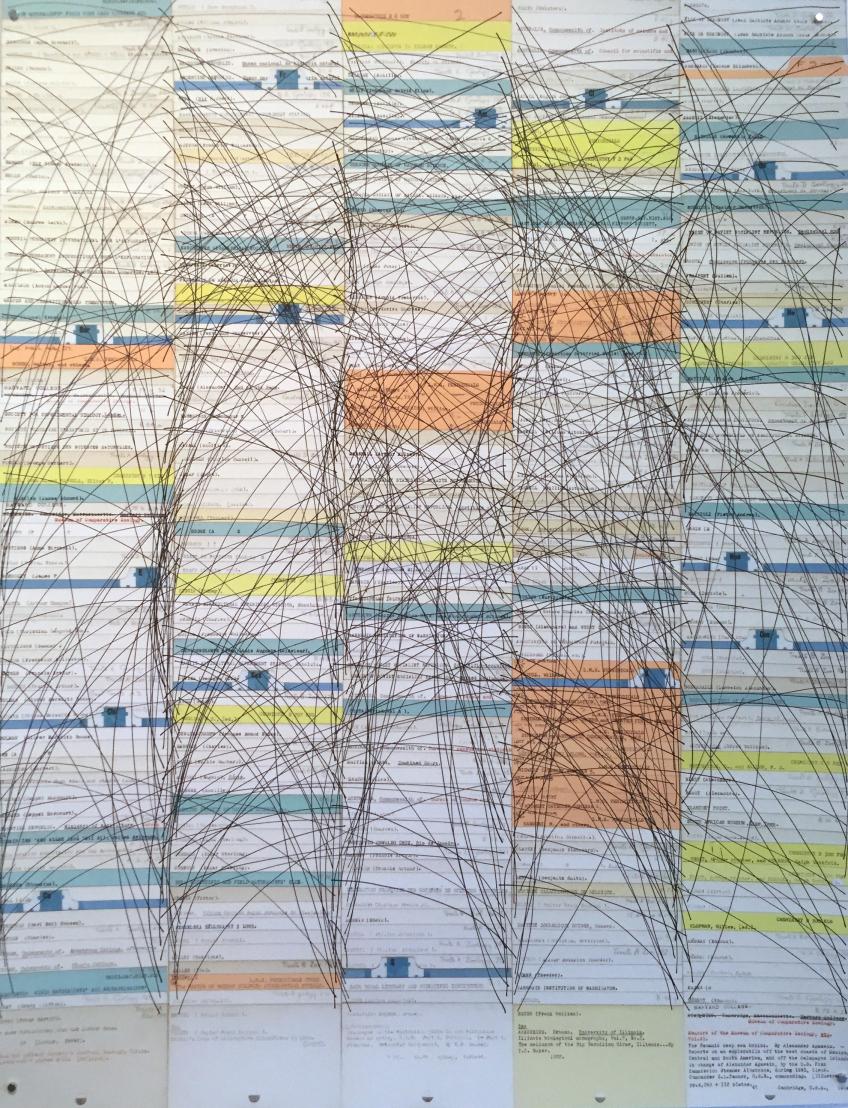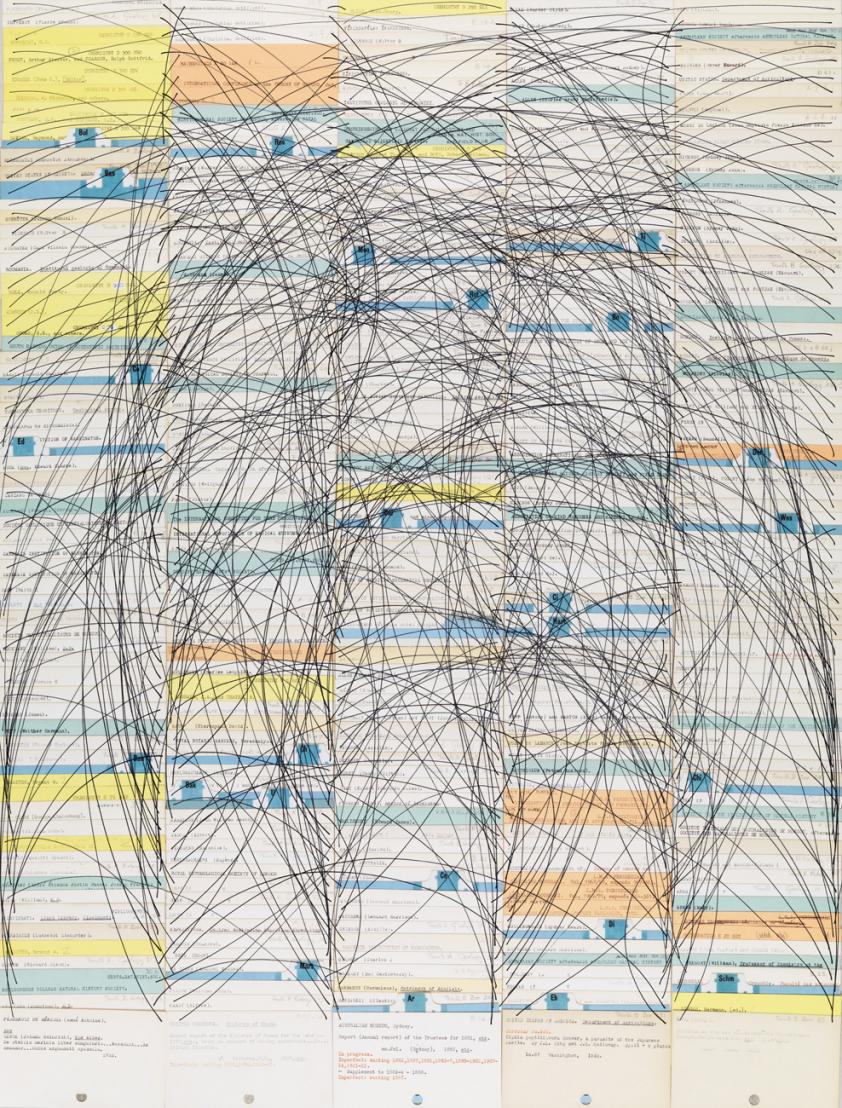Katherine was one of the few finds directly from a degree show at Slade. Her presentation was in a small room under the roof up a revolving staircase next to which hung a type writer drawing that was too long to fit. The room itself was filled with stacks of old fashioned library cards that Katherine simply liked, had kept and consecutively used in several projects. Having experienced many types of minimum wage jobs before she decided to turn it into art, makes Katherine’s oeuvre very convincing. The tasks she sets herself are always achingly physical, even boring; the works (literally!) she allows to leave the studio are nonetheless conceptually and formally composed and surprisingly beautiful.
Katherine Murphy investigates various aspects of the world of work and the conditions under which specific acts of labour are carried out: from the uniformity of daily routines to the monotonous activities of factory or minimum wage workers. This is reflected in the processed data and objects she uses as well as in the artist’s working method, which leads her to execute the same work hours over hours, days after days, sometimes up to six months repeating certain actions and processes over and over again.
Murphy’s works are formally stringent and aesthetically appealing with a strong sense for discreet and elegant beauty. This is noticeable in the fading colouring of library cards, which the artist re-sorts according to ever changing categories in her ongoing series entitled Arkwright Work Tasks. Or in the slow dissolution of an image as occurring in Decay by 100.000 pinholes, a work in which Murphy arranges a system of pinholes through chance until nothing is left.
In a unique and sincere way, Murphy’s oeuvre merges a dry and politically charged subject with a strong aesthetic quality without weakening the one or the other. On the contrary, the questions she deals with appear even more pressing in the “disguise” they are presented in. The works are frequently minimalist in appearance at first and don’t reveal the intensity and laboriousness behind Murphy’s approach. Only on closer examination one notes the artist’s hand, the cuts, cracks and fissures; witnesses of the intense processes. Examples from her series Labour + Repetition = Decay for instance only slowly reveal that the work is strewn with perforations and are exemplary for this clash of a repetitive, even absurd work task, folding a sheet of paper hundreds of times in the same way, which paradoxically results in a highly sensual work of art.
Artist Statement
Currently my practice investigates various aspects of the world of work in order that a greater understanding of employment and its role in our lives can be understood. The medium I use for this investigation is action/gesture or less specifically; work. I use myself as the vehicle and the site for this action/gesture or work. As a consequence of my own experience and knowledge the work concentrates on the lower paid or minimum wage workers of the UK; the workforce, and is greatly informed by my experience of the work (and the roles within work) that society sets aside for women.
Through casual observance or direct investigation, an aspect of a system of work will come under scrutiny, my method is to establish an entry point into the system of work and set myself rules that I will use in order to engage with and question the system of work, in effect creating my own system. This system of my work often attempts to reflect the working system present, highlighting the area of question. My system of work has no intention to be invasive or impolite; in order for it to be effective it must work within the normative social confines of the working environment. The system I employ is often carried out over long periods of time and uses repetition and structure to highlight actions and changes to the system under investigation. The information recorded through these investigations into the system of work is then processed to create a display that hopes to speak of the essence and consequently the universality of the experience had.
I consider the actions and gestures that I perform to be the work itself and the resultant display in the gallery a means of communicating this work. My intention is not to create an objet d'art but to communicate through visual display.
Repetition, being so integral to the action/gesture or work, thus becomes an important aspect of the display. Repetition is apparent within the thinking, performing and making of the work/display. Repetition is an integral part of the human existence; our lives are structured through our repeated acts.
Exhibitions at the gallery:
Katherine Murphy, Decay, 2016 (solo show)
Income’s Outcome (part four), 2014 (two-person show with Danica Phelps)
text(ure), 2012 (group show with claudioadami, Carl Andre, Alice Attie, Alighiero Boetti, Jacob El Hanani, Károly Keserü, Michael Landy and Debra Scacco)
Breeder, 2012 (group show with Sarah Bridgland, Pius Fox, Saad Qureshi, Peter Matthews and Kate Terry)
Here and again, 2010 (group show with Sarah Bridgland, Susan Stockwell and Kate Terry)
Selected work

Arkwright Work Task: Filing (by No. of consonants in first line)
Hahnemuhle Photo Rag, pen
83 x 63 cm
2016

Arkwright Work Task: Filing (by No. of vowels in first line)
Hahnemuhle Photo Rag, pen
83 x 63 cm
2016

Arkwright Work Task: Filing (by No. of vowels in first line)
Hahnemuhle Photo Rag, pen
82 x 63 cm
2016

Arkwright Work Task: Filing (alphabetically)
Hahnemuhle Photo Rag, pen
83 x 63 cm
2016